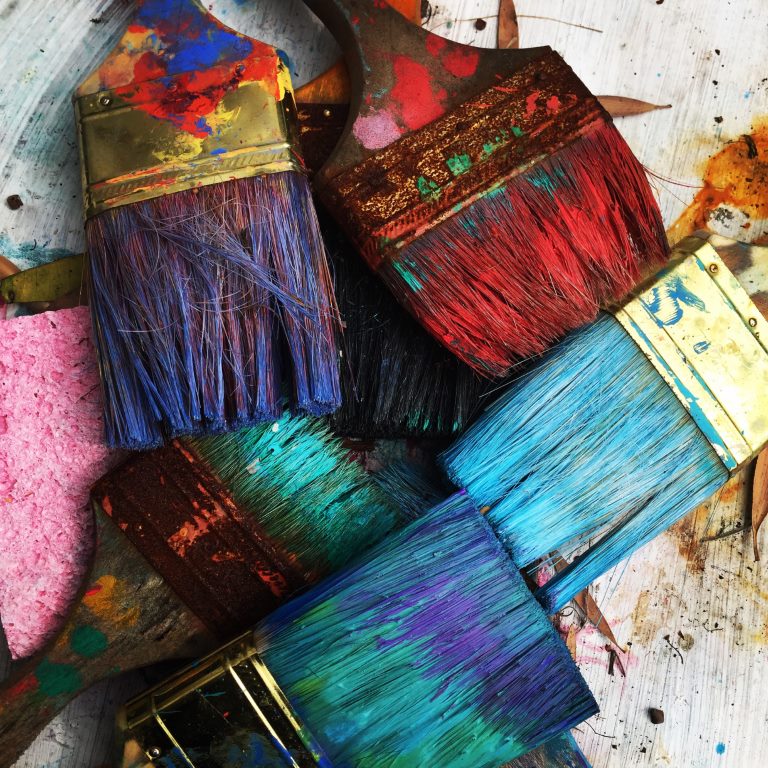How to Plan Your Architecture Tour of Brussels
Are you planning a trip to Brussels and interested in the city’s architecture? Look no further than the Architecture Tour of Brussels. Led by a local architect and guide, Jamal, this tour takes you on a journey through the city’s architectural evolution over the past five centuries. Here’s how to plan your perfect architecture tour in Brussels:Book Your Tour
First and foremost, you’ll need to book your tour. You can do so by visiting Viator’s website and selecting the date you’d like to go. The tour begins at 8:00 PM and lasts for approximately two and a half hours. The meeting point is in front of the Godiva chocolate shop at Grand Place 21/22. Don’t forget to take your camera as you’ll be able to snap some beautiful photographs along the way. You can book the tour by clicking here.Meet Your Guide
Once you’ve booked your tour, it’s time to meet your guide. Jamal is a professional and local guide who has a deep passion for the city’s architecture. He’ll be waiting for you in front of the Godiva chocolate shop at Grand Place 21/22. The tour begins promptly at 8:00 PM, so be sure to arrive early to ensure you have enough time to find the meeting point.Explore the City’s Architecture
The tour itself is a perfect balance of sightseeing and learning. You’ll visit top attractions such as the Grande Place, Les Galeries Royales Saint-Hubert, the Place De Brouckereplein, and Notre Dame du Sablon. Jamal will explain the history behind each building and how the architecture has evolved over the past five centuries. You’ll learn about the city’s Gothic and Baroque periods, as well as its Art Nouveau and Art Deco styles. Expect to be wowed by the intricacy and beauty of the buildings you visit.Take Stunning Photos
Brussels is an incredibly photogenic city, and the architecture tour is no exception. There’s plenty of opportunities to snap some stunning photos, both of the buildings you’ll see and the panoramic views of the city from Mont des Arts. Be sure to bring your camera and keep an eye out for the perfect shot.Meet Fellow Travelers
The architecture tour is a group tour, which means you’ll have the chance to meet fellow travelers. It’s an excellent opportunity to make new friends and bond over your shared love of architecture and travel. Who knows, you may even come away with some new travel companions for the rest of your trip.What’s Included
Your tour includes the services of a professional and local guide, as well as transportation between sites. You’ll be picked up and dropped off at the meeting point, which is in front of the Godiva chocolate shop at Grand Place 21/22.Book Your Tour Now
The Architecture Tour of Brussels is an excellent way to explore the city’s architectural history, led by a knowledgeable and passionate guide. Remember to book your tour in advance, arrive early to meet your guide, and bring your camera to capture the stunning buildings and view of Brussels.
Frequently Asked Questions about Brussels
If you are planning a trip to Brussels, the capital city of Belgium, you might have some questions about the city, its culture, tourist attractions, transportation, and other aspects. Here are some frequently asked questions and their answers to help you plan your trip to Brussels with ease.1. What are the must-visit tourist attractions in Brussels?
Brussels is a city that has a lot to offer to its visitors. Some of the must-visit tourist attractions in the city include:- The Atomium
- The Grand Place
- The Manneken Pis
- The Royal Palace of Brussels
- The European Parliament
- The Cinquantenaire Park and its Arc de Triomphe
- The Mini Europe park
2. What are the best ways to get around in Brussels?
Brussels has an excellent public transportation system that includes metro, bus, and tram lines. You can purchase a MOBIB card, which is a rechargeable smart card that can be used on all modes of public transportation in Brussels. Taxis are also available but they can be expensive. Biking is also an option in the city, as there are many bike lanes and shared bike services available.3. What are some traditional Belgian dishes to try in Brussels?
Belgium is renowned for its cuisine, and Brussels is a great place to sample some of its traditional dishes. Some of the must-try Belgian dishes in the city include:- Moules-frites (mussels and fries)
- Waffles (sweet or savory)
- Carbonade flamande (beef carbonnade, a stew made with beer)
- Stoemp (mashed potatoes with vegetables)
- Speculoos (spiced cookies)
- Chocolate (Belgian chocolate is world-famous)
- Jenever (a traditional Belgian gin)
4. What are the best areas to stay in Brussels?
Brussels is divided into several neighborhoods or districts, each with its own character, charm, and attractions. Some of the best areas to stay in Brussels for tourists are:- The City Center (the heart of the city, close to the main attractions)
- The Sablon (a chic and upscale neighborhood with art galleries and boutiques)
- The Saint-Gilles (a lively and multicultural neighborhood with cafes and bars)
- The Ixelles (a student-friendly neighborhood with parks and nightlife)
- The Schuman (a diplomatic and business district, close to the EU institutions)
5. What is the best time to visit Brussels?
Brussels can be visited year-round, but the best time to visit is during the spring (March-May) and autumn (September-November) when the weather is mild, the crowds are smaller, and the city is at its most colorful. The summer (June-August) can be hot and crowded, while the winter (December-February) can be cold and dark, but also festive due to the Christmas markets and decorations.6. What are some free things to do in Brussels?
Brussels has many free things to do and see, including:- Admire the art nouveau architecture of the city
- Visit the Royal Palace of Brussels (only during the summer)
- Explore the free museums (such as the Belgian Comic Strip Center, the Museum of the Belgian Brewers, or the Museum of Musical Instruments)
- Stroll in the parks and gardens (such as the Warande Park, the Brussels Park, or the Botanical Garden)
- Enjoy the free street performances and concerts in the summer
7. What are some tips for staying safe in Brussels?
Brussels is generally a safe city, but as in any large urban area, there are some precautions to take:- Avoid walking alone at night in poorly lit areas
- Keep your valuables (such as wallets, phones, and cameras) in a secure place, and be aware of pickpockets and scammers in tourist areas
- Follow the local traffic rules and be cautious when crossing the streets, as some drivers can be aggressive
- Avoid political demonstrations or protests, which can sometimes turn violent
- Be respectful of the local customs and traditions, and dress conservatively when visiting religious sites or buildings
8. Can I use credit cards in Brussels?
Yes, credit and debit cards are widely accepted in Brussels, especially in tourist areas, hotels, and restaurants. However, it’s always a good idea to carry some cash (such as Euros) as well, especially for small purchases or in case of emergencies. ATMs are also available throughout the city for cash withdrawals.9. What languages are spoken in Brussels?
Brussels is a bilingual city, with French and Dutch being the official languages. However, English is also widely spoken, especially in tourist areas, hotels, and restaurants. Some signs and menus may also be in English, but it’s always helpful to learn some basic French or Dutch phrases, especially when interacting with locals.10. Do I need a visa to visit Brussels?
If you are a citizen of the European Union (EU), Switzerland, Norway, Iceland, Liechtenstein, or certain other countries, you don’t need a visa to visit Brussels or other parts of Belgium. If you are from a non-EU country, you may need a Schengen visa, depending on your nationality and the purpose of your visit. It’s always advisable to check with the Belgian Embassy or Consulate in your home country for the latest visa requirements and procedures.
How to Spend Your Time as a Tourist in Brussels
Brussels, the capital of Belgium, is a city that is often overlooked by tourists. But those who take the time to visit are rewarded with stunning architecture, rich culture, and delicious food. If you’re planning a trip to Brussels, here’s a guide to help you make the most of your time.1. Visit the Grand Place
The Grand Place, also known as Grote Markt, is the central square of Brussels and one of the most beautiful squares in Europe. It is surrounded by gilded buildings that date back to the 17th century and is considered a UNESCO World Heritage Site. When you visit the Grand Place, be sure to take a moment to admire the stunning architecture and intricate details. You can also visit the Brussels City Museum, which is located in the King’s House, one of the buildings on the square.2. Take a Walk in the Sablon District
The Sablon district is a charming neighborhood known for its antique shops, art galleries, and cafés. It’s a great place to explore on foot, with cobbled streets and historic buildings. While you’re in the area, be sure to visit the Notre-Dame du Sablon church, which dates back to the 15th century and is considered a masterpiece of Gothic architecture.3. Explore the Atomium
The Atomium is a unique monument that was built for the 1958 World Expo. It’s a giant steel structure that is shaped like an atom, with spheres that are connected by tubes. When you visit the Atomium, you can take an elevator to the top sphere and enjoy panoramic views of the city. There’s also a museum inside that explores the history and science behind the Atomium.4. Taste Belgian Chocolate and Waffles
Belgium is famous for its chocolate and waffles, and Brussels is the perfect place to indulge. There are countless chocolate shops and bakeries throughout the city, and you can even take a chocolate-making workshop to learn how to make your own chocolate. When it comes to waffles, there are two types to try: the Brussels waffle and the Liege waffle. The Brussels waffle is light and crispy, while the Liege waffle is thicker and chewier. Both are delicious and can be served with a variety of toppings, such as whipped cream, chocolate sauce, or fruit.5. Visit the Royal Palace
The Royal Palace of Brussels is the official residence of the Belgian monarchy, but it is only open to the public during the summer months. When you visit, you can take a tour of the palace and admire the stunning architecture and artwork. Even if you can’t visit the inside of the palace, it’s still worth walking around the outside to see the beautiful gardens and fountains.6. Discover the European Quarter
Brussels is also home to the headquarters of the European Union, and the European Quarter is a must-visit for those interested in politics and history. You can visit the European Parliament, the European Commission, and the Council of the European Union, as well as numerous museums and exhibitions.7. Take a Day Trip to Bruges
If you have time during your trip, consider taking a day trip to Bruges, a picturesque medieval town about an hour outside of Brussels. Bruges is known for its canals, cobblestone streets, and historic buildings, and it’s an easy and enjoyable day trip from Brussels.Book Your Tour Now
Brussels is a beautiful and fascinating city with plenty to offer tourists. Whether you’re interested in history, culture, food, or politics, there’s something for everyone. With this guide, you can make the most of your time in Brussels and create unforgettable memories.Table of Contents

